I was introduced to Roman Britain quite unexpectedly on a cold, windy day in October 2008 in London. I had been in London for about 3 weeks then and was already head over heels in love with this beautiful city. Each day was a new day of exploration and between settling into a new city and classes at the university, there was always something wonderful to discover and delight over.
That afternoon, I took a path leading off from Tower Bridge Tube station, a path that led me past a hotel and then, quite suddenly into a walled dead-end. I was about to turn back, when I saw an information board there and walked over to read it. Good thing I did that as this turned out to be the most interesting dead-end !
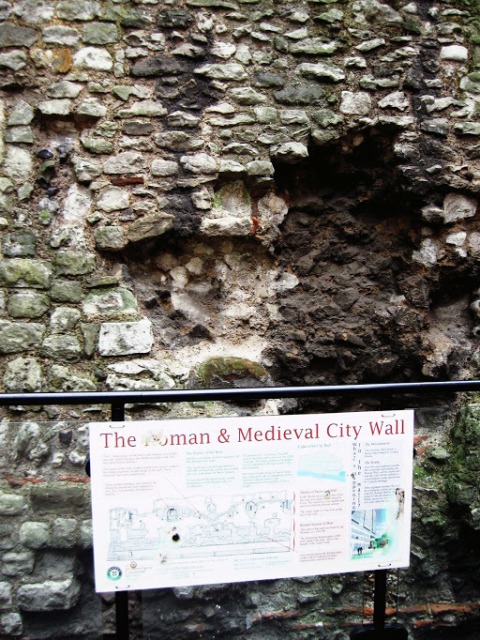
The information board announced that this was no ordinary wall, but a slice of London’s history. Built by the Romans in 190–220 AD, this wall used to run around the city of Londinium, the Roman name for London. About 9 ft thick at the base and about 20 ft. in height, it was one of the most important and expensive developments in the city at that time. (By medieval times, the height of the wall was increased and though it is not evident in the photograph, the colour of the mortar distinguishes the two sections of the wall.)
My first reaction was, “Wow! So Asterix and Obelix wasn’t an exaggeration; the Romans were really here. Dear old Julius Caesar was really here !” For the rest of the day, I walked around in a kind of daze as the Roman fever took hold. It was a fever that refused to go away and one that I had great pleasure in indulging when I visited erstwhile Roman cities in the UK and explored a part of history that I thought only existed in comic books ! 🙂
So join me on my journey of discovering Roman Britain through visits to Camulodunum (present day Colchester), Aquae Sulis (present day Bath), and Verulamium (present day St. Albans) in England. (Strangely, the wall remained my only encounter with Roman Britain in London.) It was a journey that left me breathless, awestruck, and delighted in turn, but always richer in having gained knowledge of something new, and of having discovered a whole new world.
It is the year 55 BC. Britain is not the nation that we know today and comprises tribes that are constantly at war with one another. These tribes are largely of Celtic, Gallic, Belgic, and Germanic origin. Julius Caesar has already invaded Gaul and is looking for an opportunity to extend his empire. He believes that the land across the great ocean from Gaul is full of silver and worth plundering, and decides to launch an offensive. He doesn’t really succeed beyond landing ashore on British land and unfurling the Roman flag. One year later, in 54 BC, Caesar launches a second campaign with a larger army behind him and manages to make some inroads into Britain this time. But there is no silver or other booty to plunder and Caesar returns to Rome disappointed and disgruntled.
Let us move forward to the year 44 AD. Claudius has just become the Emperor of Rome in a palace coup and has to consolidate his position quickly. And how better to do it than a military campaign to conquer Britain. Four legions set off across the sea for this purpose and after a stiff battle enter Camulodunum (the capital of the Catuvellauni, one of the largest and strongest tribal kingdoms), the largest city in Britain. A triumphant Claudius enters Camulodunum through a specially built archway (which no longer exists today) with a large retinue of soldiers and, hold your breath, African elephants. Camulodunum is declared as the capital of Roman Britain and remains so till 48 AD. Pleased with the success of his campaign, Claudius orders for a temple to be built in his honour.
Today, Colchester claims to be the oldest recorded town in Britain on the grounds that this fact was mentioned by Pliny the Elder in AD 77. It has had an interesting history of Romans, Saxons, Vikings, Normans, settlers from Belgium and Holland during the Reformation, as a centre of Puritanism in the UK, a 2,000 year presence of a military garrison in this town… And all this rich and varied history is proudly displayed for all to see as I discovered when I visited this erstwhile Roman capital.

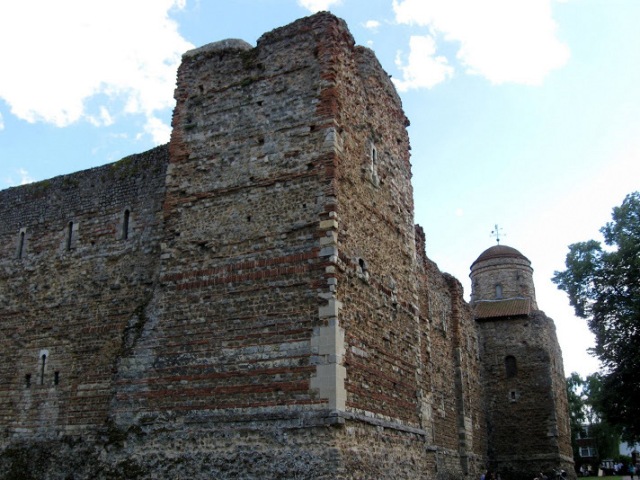

It takes the Romans 30 years to establish their empire in Britain with bribes, threats, treachery and subjugation. In 61 AD, they face a major uprising of the various tribes led by Boudica, the queen of the Iceni tribe, and who refuses to submit to Roman rule. Boudica is eventually defeated by the Romans, but not before she has led the pillaging and razing of the 3 Roman cities of Camulodunum, Verulamium and Londinium. The Temple of Claudius in Camulodunum and the Roman theatre at Verulamium are among the many structures destroyed completely.
Whatever knowledge we have of Boudica, also called the Warrior Queen, today is from the records kept by the Romans. She is believed to have been very tall, with long red hair, a harsh voice and a piercing glare.
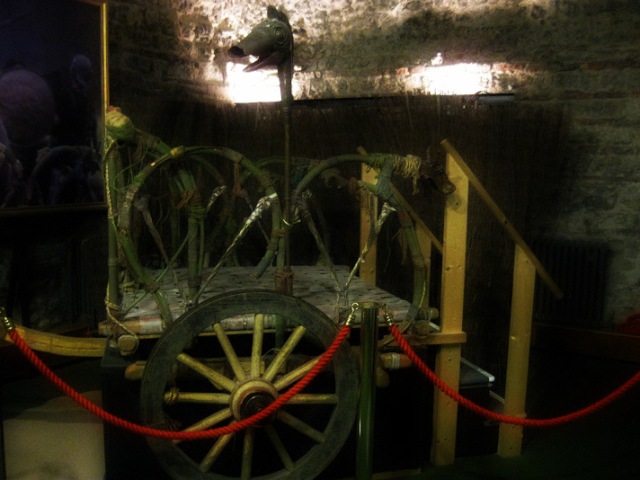
Verulamium is the third largest city in Roman Britain and has the status of a municipium (municipality). It has a basilica (town hall), a forum (market place) and a well-known theatre. The Verulamium Theatre has the capacity to seat about 7,000 people. Like all Roman theatres, this one too is a semi-circular auditorium facing the stage.
Today, Verulamium is known as St. Albans after the first British Christian martyr, who was beheaded here by the Romans around 274 AD. It is a fascinating city today and the only place in Britain, where the remains of a Roman theatre has been found. Much of Verulamium remains unexcavated due to the presence of modern constructions as well as being under agricultural land. But what little has been unearthed is a breathtaking record of Roman history in Britain as I found on my visit there.

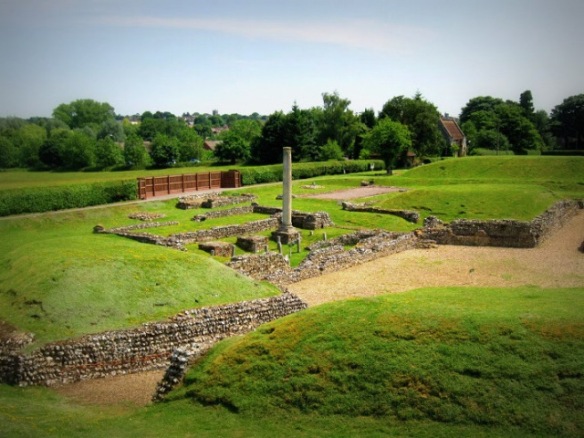
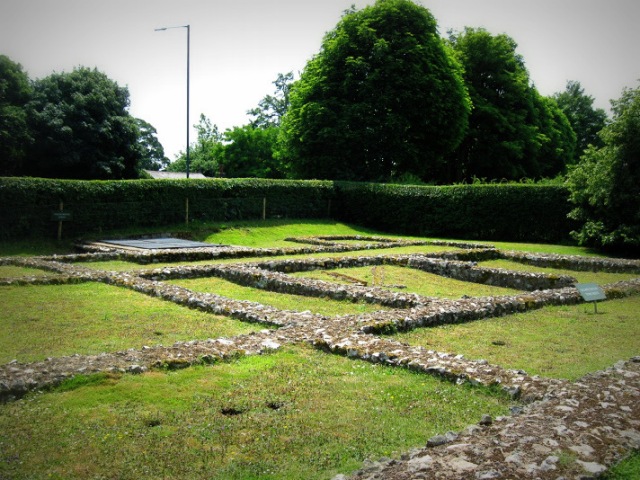
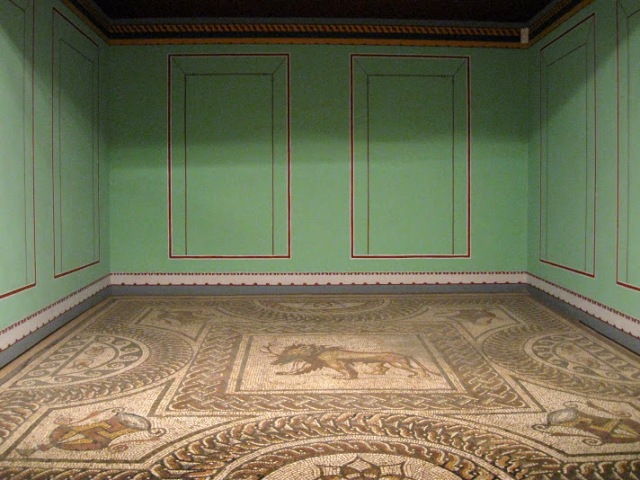
The Romans are polytheistic as are the Britons they have conquered, and have no problems in adopting the local spirits/ guardian angels and giving them Roman names. Nowhere is this more evident than in a place called Sulis, which is renowned for its healing and medicinal waters. Sulis is also the Celtic Goddess of healing, and when the Romans arrive here, they are quite happy to use the local knowledge. They rename the city Aquae Sulis and build a grand Temple and Bath complex dedicated to Minerva, the Roman Goddess of medicine and healing. The temple and bath complex not only becomes a place of healing, but also a place to ask for favours from the Gods—people would drop coins and requests into the Circular Bath at the Temple and Bath Complex.
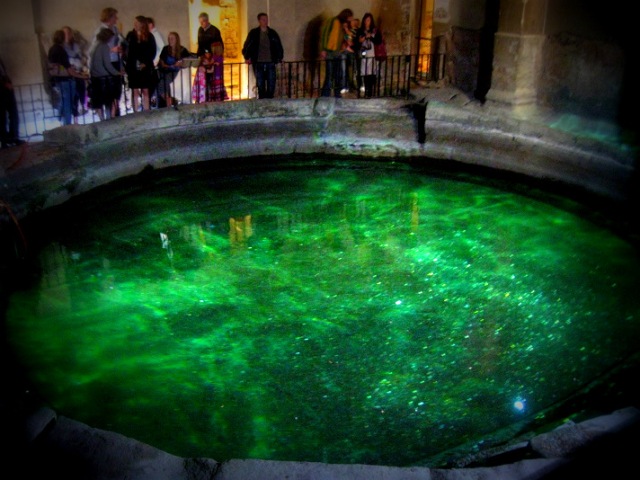
After the Romans left, the Temple and Bath Complex fell into disrepair, and was slowly forgotten. Aquae Sulis came to be known as Bath as the healing properties of the waters in this place were never really forgotten. Over the centuries, people continued going to Bath seeking cures for rheumatism and gout, as well as various skin disorders. The beginning of the Georgian era (1714-1830), helped in the revival of the city and as well as in the uncovering of the forgotten Temple and Bath Complex. While the Baths were fairly intact, there was nothing much left of the temple, as I discovered on my visit there.
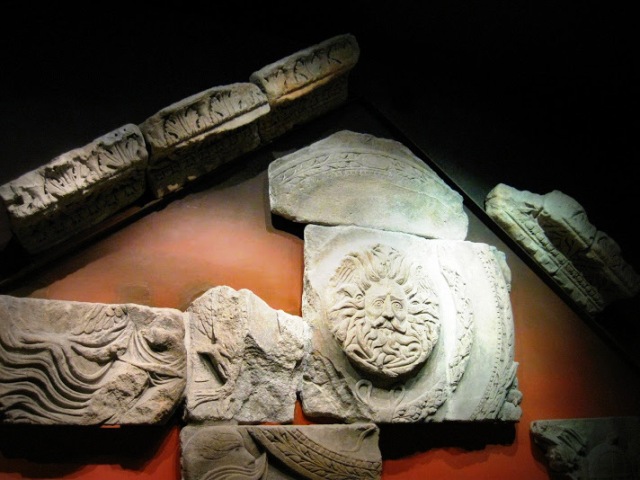

The almost five centuries of Roman rule in Britain unites its people like no other and creates a national identity. A common official language, Latin, is imposed as are other administrative systems, and its effects are felt for centuries after. But a consistently failing economy, diminishing numbers of troops, problems with payments to soldiers and officials of the Empire, and continuous attacks by Barbarian troops leads to the decline of the Roman rule in Britain, which ends in 410 AD. This paves the way for other groups to come and establish their rule.
My journey through Roman Britain was by no means a comprehensive one; what I saw and experienced and discovered is just a glimpse into a vast and complex and fascinating empire that ruled Britain for more than 400 years. The Roman remains in Britain are not even the best preserved nor the best illustration of their art or architecture; one has only to see the Roman remains in Turkey or Jordan or Syria or North African countries like Tunisia and Algeria to know what I mean. But for someone who was discovering the history of the Roman Empire for the first time, I couldn’t have asked for a better introduction. The feeling of literally walking over history cannot be described in mere words and these two photographs should explain what I felt during my visit to Verulamium.


At its peak, the Roman Empire covered vast territorial areas in Europe, Africa and Asia. But no other country today has carried forward the Roman legacy like Britain: the very name of the island is a Roman one and the capital is a Roman city, as is their language for religious and administrative purposes (for many centuries after the end of the Roman rule), their culture, their architecture, and their town planning among, so many others. It is often said that history repeats itself and as I read about and saw more of the Roman legacy in Britain, I couldn’t help noticing interesting parallels in the legacy of British rule in India !
But I’ll save that for another blog post, for I now want to know what did you thought about this journey through Roman Britain. And I would also love to hear about your own travels to different parts of the “Roman Empire”. 🙂
Notes:
- Michael Ibeji has written a fantastic “Overview of Roman Britain”. It is a must read and I highly recommend it.
- To see the photo-essay on my visit to Camulodunum/Colchester, please click here.
- To see the photo-essay on my visit to Verulamium/St. Albans, please click here.
- Sometime back, I wrote a blog post on Bath, which you can read here; for the photo-essay on Bath, please click here.

Bath is a wonderful city. That’s what I like about UK. It’s poetic and seems like you are in a land where fairytales are set.
LikeLike
Hey, Alpa. Welcome here and thank you so much for stopping by and commenting. Bath is a beautiful city and so full of ancient and contemporary history. I loved my visit there and my year-long stay in the UK does seem like a fairy tale when I look back upon those days. 🙂
LikeLike
lovely post, Sudha… incidentally, as i was telling u the other day, i am reading a history of britain (though not a serious one, but a sort of parody) and my first thought on reading about Roman Britain was “Really, Asterix and Obelisk were right!” and then wondered how come i had never heard of read of the roman influence on Britain.. considering i have heard of Boudica..:D glad to read that you were just as surprised. makes me feel so much better 😀
LikeLike
Anu, please finish that book before we meet next so that I can borrow it 🙂
Roman Britain is fascinating because one does not really not know much about it and it comes as a surprise to see their length of stay their or their lasting influence on British life. When an Indian reads of English/British history it is always with the coming of the Normans and the establishment of monarchy.
Let me share something with you that will make you feel better – I had not even heard of Boudica, for you see Asterix and Obelix comics do not mention her 😛
LikeLike
I remember that wall from our London walk which started at that wall in the first picture. I have a pic of it on my phone! I understand how you must have felt ‘walking on history’. When I visited Jerusalem, we walked on the excavated Roman road in one section of the city. They have preserved the Roman heritage better, as you have rightly observed, though they destroyed the Jewish temple.
I didn’t know that Britain was ruled by Romans for four centuries. Thanks for the nice trip through Roman Britain though the ruins are hardly anything to write home about.
LikeLike
That must have been the old London walk, one which took you around the square mile and St.Dunstan’s church, St.Olav’s and St. Stephen’s church, right?
The Roman remains in Britain are nothing home to write about for 2 reasons, in my opinion – (i) Boudicca razed 3 roman towns completely and that included the best of roman architecture like the theatre, temple, basilica, etc. For a century after this the Romans were just too busy stabilising their empire rather than building new stuff. (ii) Economic decline had started and when regular salaries were difficult to pay, the question of rebuilding never arose. I’m just thankful that there is something remaining to see. And what little has been excavated is being taken care of well.
Hopefully when I visit Jerusalem next year, I will be able to walk on the excavated Roman road too 🙂
LikeLike
It was one of the ‘boring London Walks’ as Diya told us after we took her on one. Poor kid. I do hope she learns about London the interesting way that you have shown here 🙂
LikeLike
Poor Diya ! The Old London Walk would definitely not have been for her and there’s still time for her to learn and appreciate and enjoy stories of London’s history 😀
LikeLike
Wow! I wish our history lessons were this interesting…I know I am being a bit weird here,but I am book marking this post for R to grow up and read and have fun learning something new… 🙂
LikeLike
Thanks, RM. You made my day with this comment and I hope that R enjoys it when she finally reads it. 🙂
LikeLike
Really wonderful walkthrough 🙂 enjoyed the baths the most.
LikeLike
Thank you. The baths are very interesting as a concept and as a piece of history, but my personal favourite was Verulamium. If there is a place I’d like to go back to, it is this one. 🙂
LikeLike
Such a nice post, Sudha! My entire insight into Roman Britain has been through Asterix only, and reading this felt like an informative extension! 🙂
LikeLike
Thank you, Neeraj. Glad that you enjoyed this journey. I am seriously thinking of petitioning for Asterix and Obelix comics to be included as part of the history curriculum in schools. What say? 😀
LikeLike
It must, must be included 🙂 If you are championing for the cause, you have one volunteer supporter already!
LikeLike
Wow! that was a beautifully written post of Roman history in Britain. Brought back memories of my school days – studying history and literature. I particularly liked the pictures. Even though Roman history is not well preserved in Britain, I am sure it is far better than what we do in our country. Most of our structures/ramparts are in a state of decay.
Just trying to imagine walking under the Roman pedestrian archway… …gives me goose bumps all over. Are the bricks really that old or have they done some restoration work.
LikeLike
The bricks are really that old, Neena — nearly 2000 years old. A lot of the material from Roman ruins have been been recycled and you can see them in newer constructions. In Verulamium, I even saw some bricks with what looked like scorch marks — perhaps a reminder of the time that Boudica razed the Roman city.
LikeLike
I second R’s mom. If history were taught like this in schools, I am sure there would be many takers, and more interested pupils.
I, for one, though I like visiting sites with historical significance, do not really ‘get’ the historical events that happened there. I am HOPELESS at history and GK, to say the least. I am not very proud of that fact. 😦 This post inspires me to pay a bit more attention to what has happened years ago, at least in my country.
LikeLike
Thank you for your lovely words, TGND.
History in schools is never about events in the past which have shaped our present and will affect our future; unfortunately, it’s only about memorising dates. I was lucky to have a couple of passionate teachers for history and perhaps this is one of the reasons I love love history so much. It is this passion and love for history that spurs my travels and explorations.
LikeLike
On my recent visit to TURKEY saw five of the Roman sites under excavation EPHESUS, TROY.PERGE ASPENDOS PHESELIS gives one lot of insight into thier reign in those countries. Your blog was
very intresting you have made the most of your stay in London UK
LikeLike
Arnavaz, Turkey is supposed to have the best Roman remains and is one place that I have to visit. Let’s see when I can make it to this beautiful country 🙂
LikeLike
Thanks Sudha. I had seen the Roman wall in London but not the other parts of Roman remains in rest of the country (though I did visit Colchester once).
LikeLike
The best Roman remains that I saw in England was at St.Albans/Verulamium, particularly the mosaics and do try to visit this place next time you are in the UK.
LikeLike
Sudhagee that was yet another lucid post. It was an interesting read and I loved visiting Roman England with you. You are right, the British history in grad and post grad crriculum has no mention of this phase. Probably there weren’t much recorded work. And yes Asterix and Obelix have definitely introduced me to the Romans and Gauls and the Germanics long before the boring history books did!
LikeLike
Thanks, Ilakshee. Glad you liked the post. And considering that so many people endorse Asterix and Obelix, I think it is high time they are introduced as part of our history curriculum 😛
LikeLike